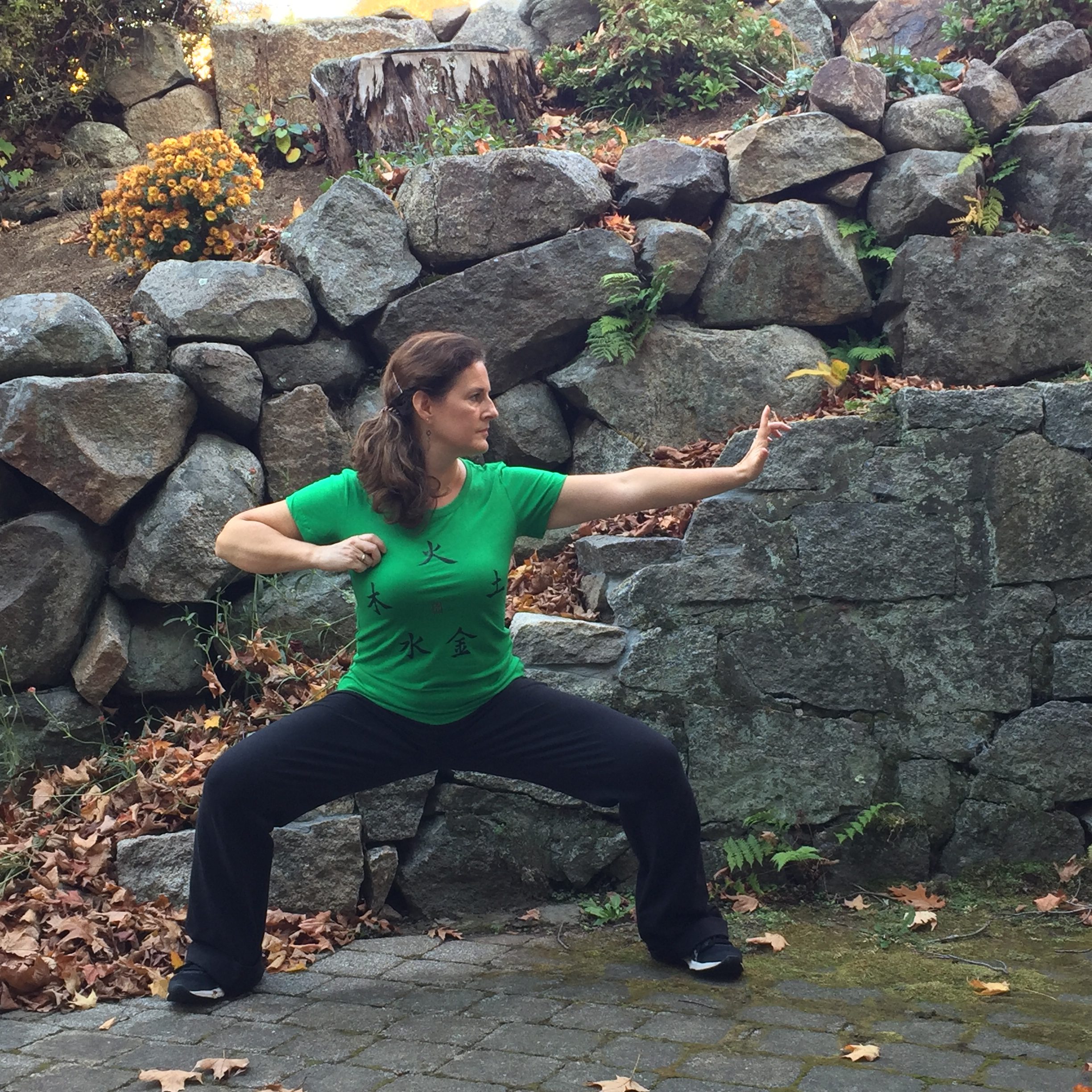Traditional Chinese Medicine (TCM) has known for thousands of years what western medicine is now beginning to understand and practice: that diet, herbs, acupuncture (and acupressure), massage, and qigong combine to improve longevity and the quality of life. An awareness of healthy eating habits and the use of acupuncture has surged in the past few years and anyone who’s had a good massage can attest to its health benefits! Many natural grocery stores and Whole Foods carry numerous herbals and herbalists are popping up in more and more communities (yay!). But what about qigong?
What is qigong?
Qi = life force, aliveness, energy. Qi is what animates us.
Gong = Work or cultivation
Qigong is the cultivation of energy and the cultivation of the skill of moving energy.
Qigong helps us tap into the abundance of energy in nature and all around us. When we tap into that energy, we can save and store more of our own. The more balanced energy we have, the better we feel and the healthier we are. Qigong also helps to create smooth flow of energy within our bodies, feeding our organs and tissues and helping to alleviate stagnation that can cause pain and disease. Abundant flow of energy manifests in the body as better-functioning organs, more flexible muscles, suppler joints, clearer thinking, and more balanced emotions. Free-flowing qi creates a healthy mind and body.
The current COVID-19 pandemic has brought both fear and awareness to the state of our health. The importance of prevention has been brought into the limelight which is long overdue! In researching ways to prevent COVID-19 and other infections, scientists found qigong. A study (1) published in May 2020 in the American Journal of Geriatric Psychiatry concluded that “qigong may be potentially usefulfor the prevention, treatment, and rehabilitation of respiratory infections including COVID-19. The elderly, in particular, could benefit from doing qigong during the ongoing pandemic as it is easy to practice.”
Qigong works by regulating breath, reducing stress and tension in the body, and mobilizing joints, for starters. There are thousands of ways to practice qigong including seated practices, standing practices, challenging movements and flows, and calming meditations. In the scientific study cited above, one of the practices noted was Ba Duan Jin, or The Eight Pieces of Brocade. This qigong set is one of the most widely practiced in China and around the world for health and longevity. It was originally created by Marshal Yeuh Fei to improve and health of his soldiers.
Earlier this year I taught the seated version of The Eight Pieces of Brocade and my students loved it. With the uptick in COVID-19 cases and flu season upon us, I will also be teaching the standing set. This is a gentle set that wrings out tension in the body, builds strength, and increases mobility. After practicing, most people report feeling energized and calm, the ultimate qigong state.
The best thing you can do for yourself is prevent illness by building a strong body and mind. Tai Chi and Qigong will help you do that. Join me for The Eight Pieces of Brocade standing set beginning Tuesday, November 10, 2020 at 9:30AM (EST). We will practice this set through the month of November and into December and beginners are both welcome and encouraged. We’ll get better as we go but it’s not necessary to start on Nov 10, you can join in anytime.
Classes will be held via Zoom every Tuesday from 9:30AM – 10:30AM (EST). To register at any time, send an email to Su*****@*****************nd.com
For more information on Qigong and Tai Chi classes, click here.
References
- Fan Feng, et al. Qigong for the Prevention, Treatment, and Rehabilitation of COVID-19 Infection in Older Adults. Am J Geriatr Psychiatry. 2020 Aug; 28(8): 812–819. doi: 10.1016/j.jagp.2020.05.012

Draw the Bow

